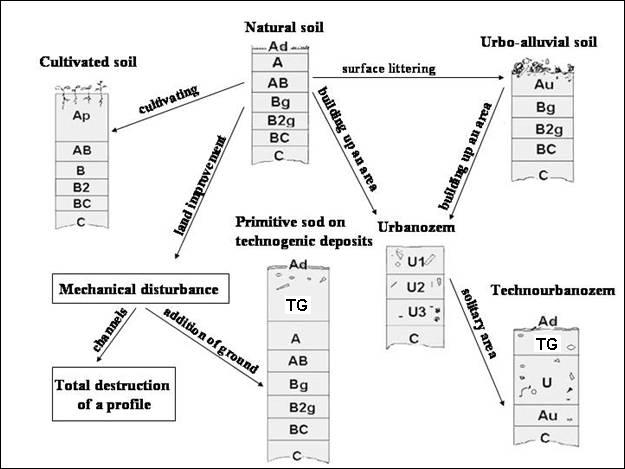
Thursday, 13 July 2006 - 4:20 PM
77-3
Urban Soils of Floodplains in the City of Moscow.
Sergey Shoba1, Tatiana Prokofieva2, and Olga Kruglova2. (1) Moscow State Univ., Soil Science Dept., Leninskie Gory, Moscow, 119992, Russia, (2) Moscow State Univ, Soil Science Dept., Leninskie Gory, Moscow, 119992, Russia
Urban settlements are often situated in river valleys. This applies to Moscow which is one of the World's most urbanized areas. It has a well developed river network including a main waterway – the Moscow River and its major tributaries such as Yauza, Skhodnya, Neglinnaya etc., and approximately 130 minor tributaries. The valleys occupy about 40% of the total city area and floodplains take up about 10% of this. These floodplains are partly submerged even though runoff is regulated, and riverbeds are enclosed behind barriers. Human impact has been considerable on these floodplain landscapes over many centuries and this has involved ploughing, compaction, construction of embankments as well as serving as a repository for waste. Soil features have changed with human impact. Subacid pH shifted to neutral or alkaline (8 or more) and the contents of major plant nutrients increased. In particular, available phosphorus is up to 20 mg /100g (citric acid extractable P2O5) and organic carbon is 2-6%. This has resulted from using fertilizers, peat compost, domestic animal excrement and other organic waste. In addition there is a noticeable amount of technogenic inclusions (urban & industrial products) in these floodplain soils and some of them produce carbonates, which are unusual for natural alluvial soils in this region. In particular, formerly waterlogged alluvial soils have changed considerably. The main evolutionary trends in floodplain soil modification, under intensified human impact as determined from our study, are outlined in Fig. 1. Macro- and micromorphological data indicate that the main modification in the chemical and mineralogical properties of these soils are as follows: (i) constant introduction of mineral material (alluvial and technogenic) into upper horizons which results in a predominance of skeleton grains over plasma in which fragments of artifacts such as brick, glass, pottery, mortar etc. occur among skeleton material; (ii) the plasma is mainly isotropic clayey-humus material that reflects contemporary processes of humus formation and humus accumulation; (iii) the semi-hydromorphic to hydromorphic conditions with varying redox potential favors iron mobilization and segregation of iron compounds (e.g. pyrite and goethite); (iv) the redistribution and segregation of carbonates take place in technogenic and urbic horizons, and minerals of the vivianite-kerchenite series (calcium and iron phosphates) form in middle horizons. These latter minerals and resulting pedofeatures are typical for acid peat bogs of the south taiga but not in undisturbed floodplain soils around Moscow. Thus, with urbanization the modified floodplain soils begin to assume feature of other soils especially those soils that are less well drained. This occurs via the input of new materials very different from natural materials as well as changes in soil thickness by aggradation and excavation. As a result, local conditions are conducive to the formation of specific mineral pedofeatures which can serve as a marker for new genetic horizons reflecting urbo-pedogenesis.
Fig. 1. Evolutionary trends and profile morphotypes of urban floodplain soils U – urbic horizons – diagnostic one for specific urban soils; TG – technogenic banked horizons; A, B, C – horizons of natural soils.

Back to 1.1B Site Disturbance: The Role of Soil Morphology in its Assessment - Oral
Back to WCSS
Back to The 18th World Congress of Soil Science (July 9-15, 2006)